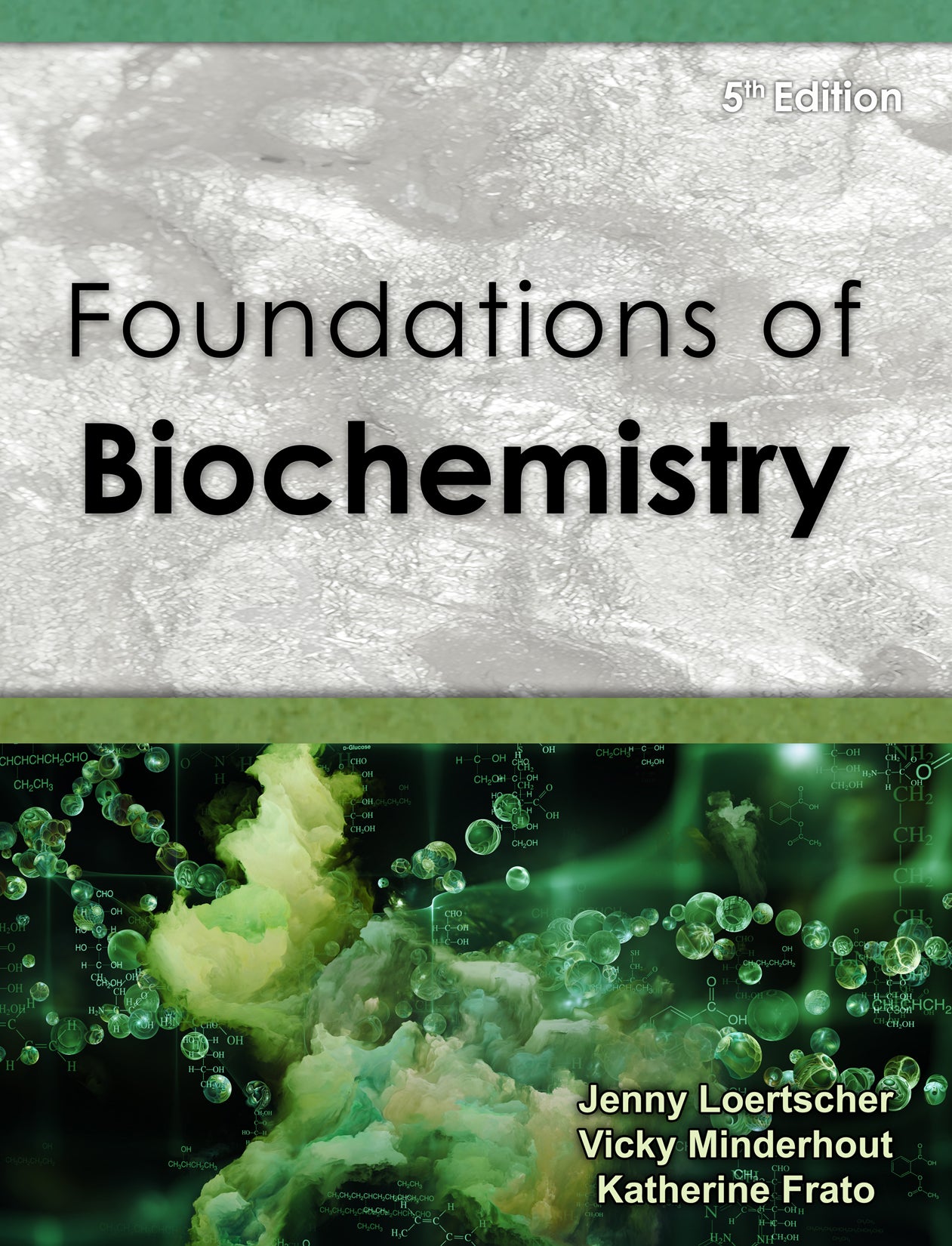Foundations of Biochemistry, 5th Edition
(8.5x11", 187 pages, 37 activities, softcover)
Foundations of Biochemistry, 5th edition takes advantage of the proven results of Process Oriented Guided Inquiry Learning, and is authored by educators who have tremendous practical experience not only within their fields but also in using POGIL within their classrooms. Exemplifying many of the best practices in science education, students are encouraged to explore the synergy of working, learning, and thinking together in groups, even as they apply textbook knowledge to real-world situations and begin to explore current biochemistry scholarship and research available online. The 5th edition includes two new activities on protein structure and function and the metabolism section has been updated and streamlined.
The companion website is available at: http://www.fobc5.com/
10 for $15! Custom Package: Select your 10 activities HERE.
Instructors should select the 10 activities from Foundations of Biochemistry they would like to use in their classroom at this link. Once we receive that order, we will contact the instructor with the following information:
- A free desk copy of the package
- The link (URL) you should share with your students so they can purchase and download the package (pdf format)
- Access to the Instructor Resources for Foundations of Biochemistry
Each page of the pdf is stamped with their name and e-mail address so that instructors can ensure that students are each purchasing their own copy and not violating the terms of the 10 for $15 agreement.
Thank you for your interest in our book of POGIL activities for the biochemistry classroom! Over the past decade, we have worked with hundreds of educators around the globe to support them in successful implementation of student-centered teaching practices in biochemistry. We know from personal experience that making instructional changes can be challenging and that there is no one-size-fits-all model. We hope our new system for creating custom electronic workbooks will empower you to make the changes that work in your classroom with your students. Please feel free to contact us at any point in the planning and teaching processes - you are not alone in this endeavor. We are happy to offer perspectives on selecting activities, integrating activities into your existing curriculum, revising your syllabus, trouble-shooting teaching challenges, and more.

Jenny Loertscher, PhD
Ph.D. in Environmental Toxicology (University of Wisconsin)
Dr. Loertscher is focused on research to understand and improve student learning in undergraduate chemistry and biochemistry. Her research in this area focuses on the ways in which faculty classroom practices influence students' understanding of foundational concepts and their ability to develop transferable skills like teamwork and analysis of complex problems.

Vicky Minderhout, PhD
Ph.D. in Chemistry/Biochemistry (Northwestern University)
Dr. Minderhout works with a community of biochemists, biologists, and chemists to identify concepts that are critical for learning in biochemistry. They design instructional strategies to target these concepts, measure changes in student learning and disseminate classroom strategies and assessment tools. She hopes to develop tools which can reliably and validly measure student learning.

Kate Frato, PhD
Ph.D. in Molecular Biophysics (Johns Hopkins University)
Dr. Frato is deeply interested in interdisciplinary research at the interface of biology, chemistry, and physics. Her group uses a combination of bioinorganic chemistry and biophysical methods to investigate the substrates, mechanisms, and biological roles of heme peroxidases, which may be involved in templating the silica frustule, a species-specific cell wall structure.

Forwards (To the Student, To the Instructor)
Section 1 Chemistry in an Aqueous Environment
Section 2 Amino Acids and the Primary Structure of Proteins
Section 3 Structure of the Protein α Helix
Section 4 Stabilizing Forces in Protein Structure
Section 5 The Thermodynamics of Protein Folding
Section 6 Tools of Biochemistry
Section 7 Problem-Solving Challenge: LWBGase
Section 8 Hemoglobin: Protein Structure and Function
Section 9 Enzyme Catalysis
Section 10 Enzyme Kinetics
Section 11 Enzyme Inhibition
Section 12 Enzyme Problems
Section 13 Protein Structure and Fuction Problem Solving
Section 14 Carbohydrates and Glycoproteins
Section 15 Lipid Structure and Function
Section 16 Membranes and Transmembrane Proteins
Section 17 The Potassium Ion Channel—Protein Structure and Function
Section 18 Transmembrane Proteins Problem
Section 19 DNA and the Central Dogma
Section 20 Higher Order Structure of Nucleic Acids
Section 21 Understanding the Rate Determining Step in a Metabolic Pathway
Section 22 Understanding Complex Chemical Systems in Living Organisms
Section 23 Understanding Metabolically Far From Equilibrium Reactions
Section 24 High Energy Compounds
Section 25 Enzymes in Glycolysis
Section 26 Regulation of Glycolysis and Gluconeogenesis
Section 27 Metabolic and Hormonal Control in Glycolysis and Gluconeogenesis
Section 28 Regulation of Glycogen Storage and Breakdown
Section 29 Anaerobic Metabolism Problem Solving
Section 30 Pentose Phosphate Pathway
Section 31 Exploring the Citric Acid Cycle
Section 32 Electron Transport and Oxidative Phosphorylation
Section 33 Metabolic Labeling
Section 34 Fatty Acid Degradation and Glucose Synthesis
Section 35 Understanding Fatty Acid Biosynthesis
Section 36 The Urea Cycle and the Effects of Protein Degradation
Section 37 Integrated Metabolism
Access Instructor Resources HERE.
The secure Instructor's Resources web site includes keys to the activities, detailed facilitation plans, additional skill exercises, rubrics and activities to support the course syllabus and active learning...everything you need to begin using the book (and then some)! We are happy to grant access to the Instructor Resources for instructors who formally adopt the use of this text in their classrooms. Purchase of a single copy of the book does NOT qualify for access; we must either receive an order from your campus bookstore or make arrangements for your students to purchase the book directly from our website.
Please request access to the Instructor Resources after you have formally adopted the book for use in your course(s).

















